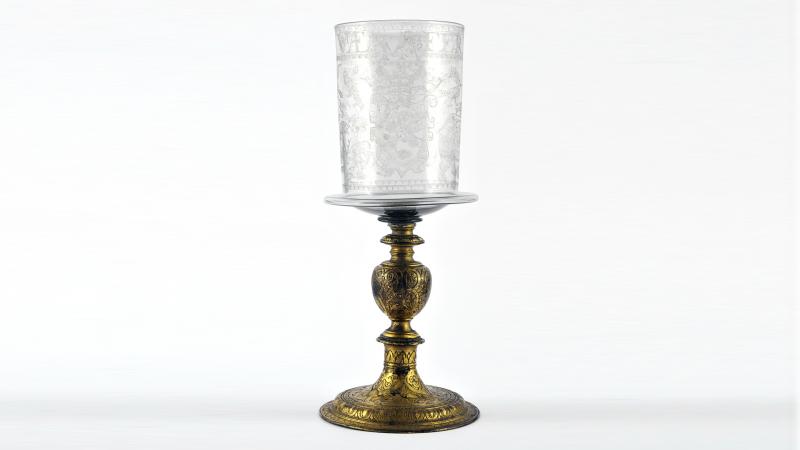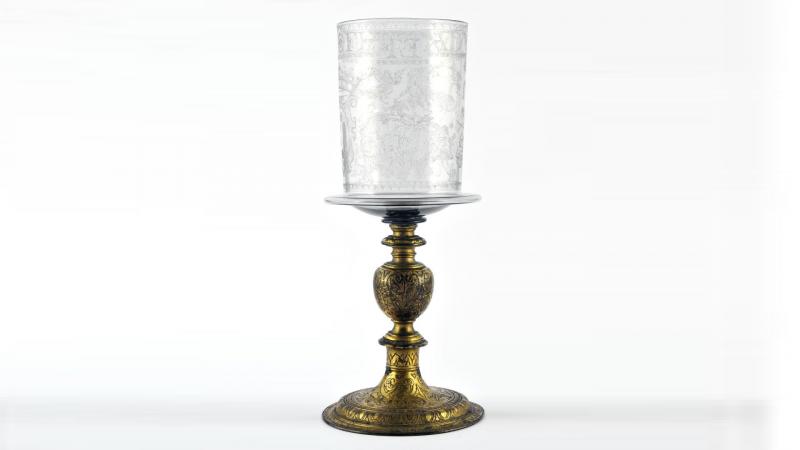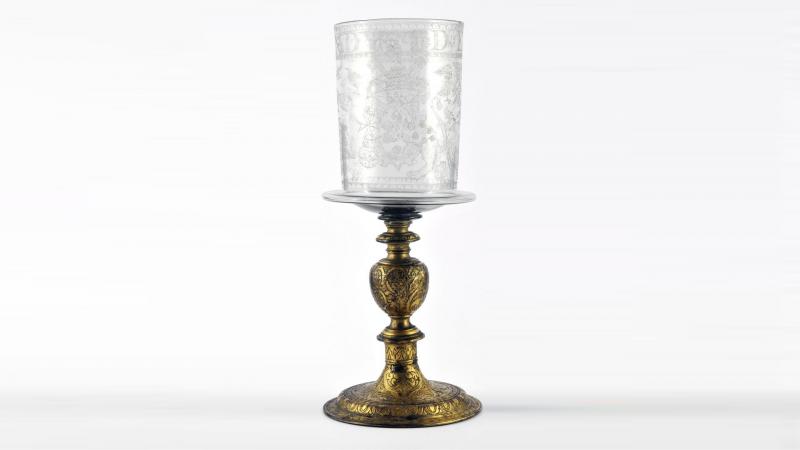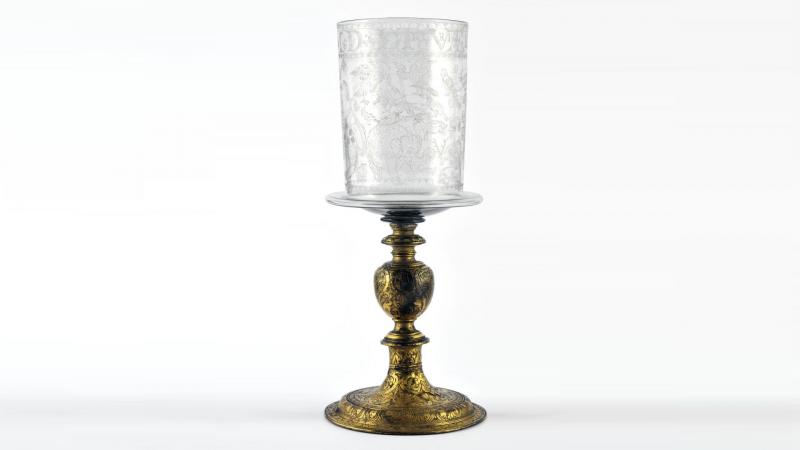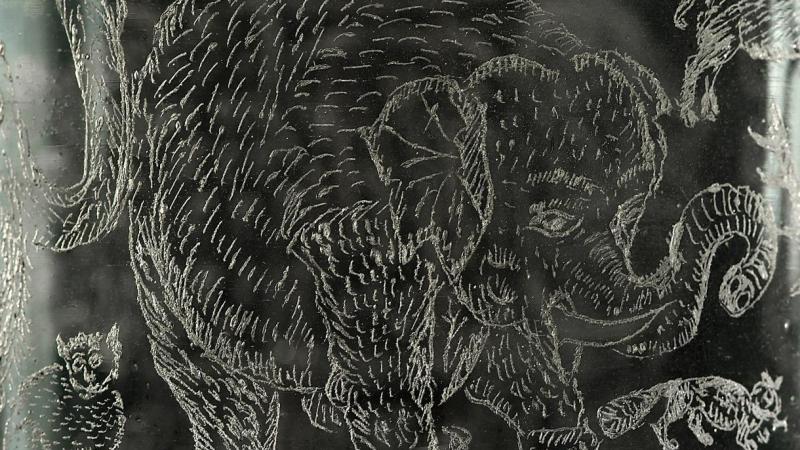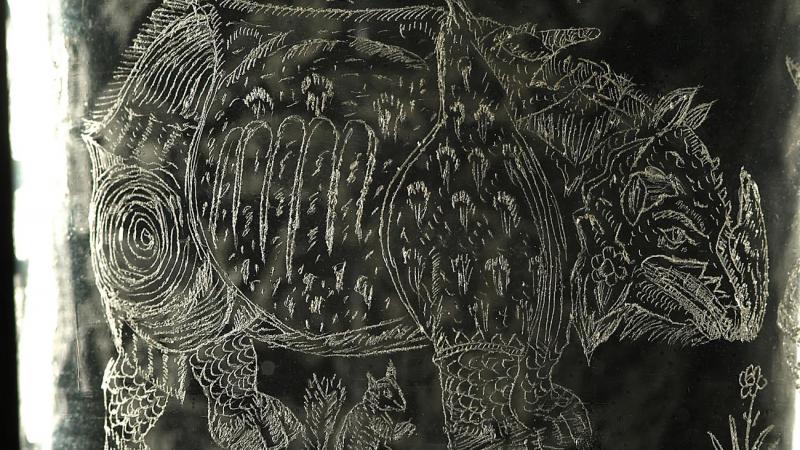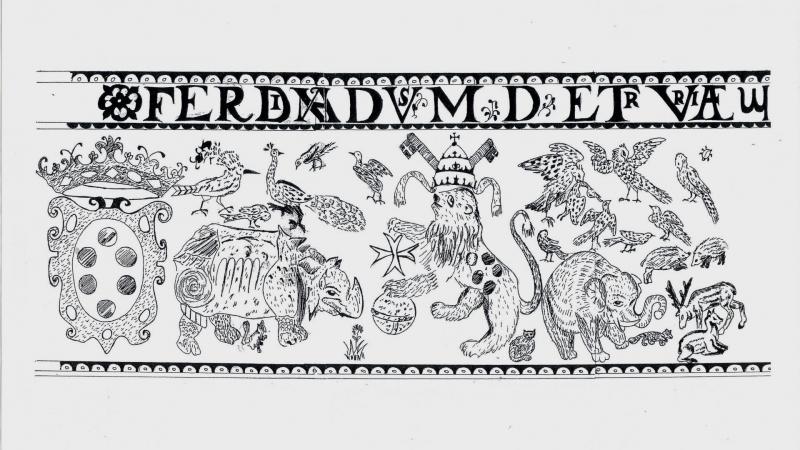Diamond-point engraving appeared in Murano between 1530 and 1535, thanks to the glass-maker Vincenzo D'Angelo. The technique consists of delimiting the contours of the subjects with a continuous line and then filling the spaces with hatched lines.
The goblet is engraved with the coat of arms of the Medici family, characterised by six roundels (solid residues obtained after the extraction of oil from grains and oleaginous fruits) that nod to the fact that the members of this family were originally pharmacists or doctors, before becoming merchants and bankers. There are many forest animals on both sides: a squirrel, two boars, a fox, a deer and a doe, or exotic animals: a hoopoe, a peacock, a rhinoceros and an elephant. We also see a cat, a bee, a ladybird and various bird species, including three birds of prey (one with its prey).
The other main motif, which is opposite the coat of arms, is a lion, which represents Ferdinand I, Grand Duke of Tuscany from 1587 to 1609, to whom the inscription on the border of the goblet "FERDiNADVs * M * D * ETrVriAE" refers (Etruria corresponded to the area of Tuscany). With the presence of five roundel symbols of the Medici family on the fur, one leg resting on the terrestrial globe and the other on the cross of the Tuscan order of Saint-Etienne (founded by Cosimo I de' Medici in 1572), the king of animals, also known as Ferdinand I, is depicted as being crowned with a papal tiara, reigning as absolute master over Tuscany and the world. One may be able to see a satire of the manner in which the Grand Duke led Tuscany in this symbolic representation.
This animal decoration constitutes a veritable illustrated bestiary and is exceptional and very rarely engraved in Venice. Furthermore, an inventory of the wardrobe of Ferdinand I de' Medici, prepared in 1587, included 4 glass basins adorned with animals, which would guide the Florentine production of this unique goblet. It was transformed into a ciborium in the 19th century, with the original glass base replaced by golden brass.
